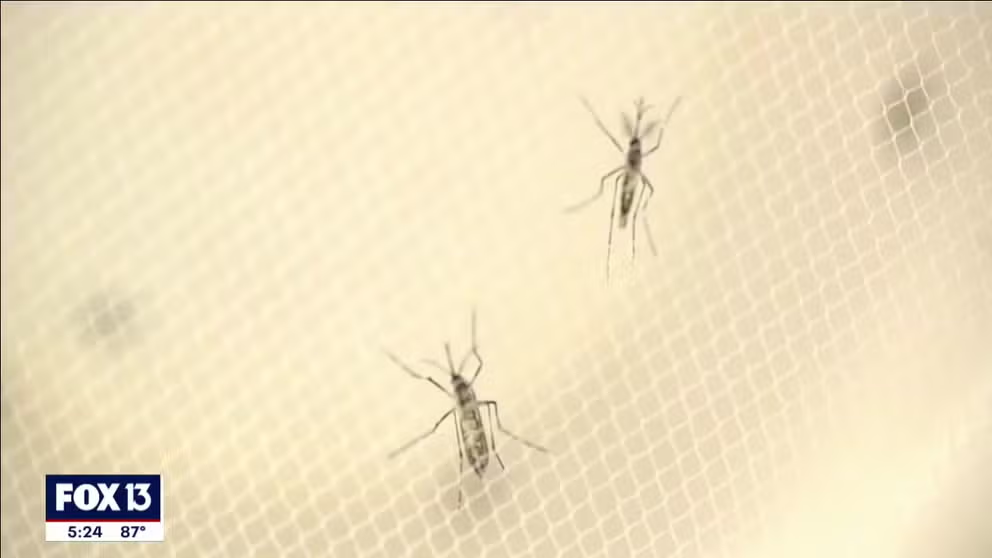CDC warns of surge in travel-related dengue fever cases in US
Health experts at the Mayo Clinic estimate that half of the world’s population lives in areas vulnerable to dengue fever. Symptoms of dengue fever include aches, nausea, vomiting and can lead to life-threatening emergencies.
Drone technology helps fight mosquitoes
A University of South Florida professor is in Uganda trying to perfect a revolutionary way to pinpoint mosquito breeding grounds and eradicate them before spreading potentially deadly viruses.
ATLANTA - The Centers for Disease Control and Prevention is warning about a spike in infections of mosquito-borne illnesses, including dengue fever, in the U.S.
According to the CDC, nearly 10 million people have reportedly been infected with the virus, which has already surpassed last year’s entire count.
Countries in South America account for more than 98% of the infections. Brazil leads the way with nearly 8.5 million suspected cases.
Data from the U.S. and its territories show that there have been 2,241 cases reported in 2024, with most happening in the U.S. Virgin Islands and Puerto Rico.
In March, Puerto Rico issued a public health emergency after local officials said they saw a 350% increase in activity compared to the last five years.
PUERTO RICO ISSUES PUBLIC HEALTH EMERGENCY AFTER SPIKE IN MOSQUITO-BORNE INFECTIONS

An adult female Anopheles mosquito bites a person.
(CDC / FOX Weather)
What is dengue fever?
According to the Mayo Clinic, dengue is a potentially life-threatening infection that is transmitted through mosquitoes.
Similar to Zika, there are no known cures or vaccines for the virus. Symptoms can be treated with medication.
Symptoms of dengue fever include aches, nausea, vomiting, difficulty breathing and fatigue, and they last for upwards of a week.
Despite the increase in cases, the mortality rate remains relatively low compared to the overall number of infections, which is likely the result of the increase in the quality of medical care.
NEW STUDY SUGGESTS CERTAIN COLORS YOU WEAR COULD ATTRACT MOSQUITOES TO BITE
World Health Organization ties global spread to climate
The World Health Organization maintains that the recent increase in mosquito-borne illnesses is likely tied to the climate pattern El Niño and is combined with climate change.
The organization states that both factors have resulted in higher temperatures, increased rainfall and elevated humidity levels in regions conducive to heightened insect activity.
Of the more than 3,000 types of insects, the Aedes aegypti mosquito is thought to be the primary spreader of dengue and other viruses such as chikungunya, yellow fever and Zika.
"Wherever you have a significant number of mosquitoes and warm hot environments is where you see dengue transmission," Dr. Stacey Rizza, a Mayo Clinic infectious diseases specialist, previously told the Mayo Clinic News Network.
The WHO previously stated that the transmission cycle of dengue typically lasts 3-4 years. However, with climate change altering norms, it is uncertain whether the virus will continue to follow past patterns.
Preventive measures are considered crucial in combating mosquitoes and include using effective repellents, wearing appropriate clothing and installing screens to prevent insects from entering indoor spaces.

CDC tips on protecting yourself from mosquito bites.
(Centers for Disease Control)
